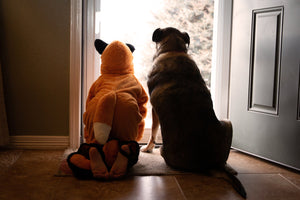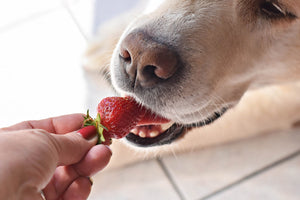If you’ve ever watched your dog twitch, whimper or wag their tail while snoozing, you’ve probably wondered: Do dogs dream? The short answer is yes—dogs dream very much like humans do. Their sleep patterns show cycles of rapid eye movement (REM), the stage most associated with dreaming. During this phase, the brain processes memories and daily experiences, which means your pup’s nightly adventures might be more familiar than you think.

What Do Dogs Dream About?
While we can’t ask our pets directly, studies suggest that dogs replay parts of their daily life in dreams. Think of it as a highlight reel of their favorite activities. Many scientists believe that dogs dream about running, playing fetch, chasing squirrels or simply exploring. Puppies often dream more than adults, possibly because they are busy learning so much about the world each day.
Do Dogs Dream About Their Parents?
Because dogs are so bonded to their humans, it’s highly likely they dream about the people they love. Just as you might dream about friends or family, your dog could be reliving moments spent with you, like a walk in the park or cuddle time on the couch. When you see a sleeping dog wag their tail or let out a happy bark, there’s a good chance you’re part of their dream.
What Do Dogs Dream About When They Cry?
Hearing your dog whimper or cry in their sleep can be concerning. But don’t panic—this behavior doesn’t always mean they’re having a nightmare. Dogs may cry when reliving strong emotions, whether exciting, stressful or confusing. For example, a pup could be replaying a game of tag that got a little too intense or remembering a loud noise that startled them. Most of the time, crying is just a natural part of dream expression.

How Do We Know Dogs Dream?
Researchers studying animal sleep have found that dogs experience REM sleep in cycles similar to humans. In one well-known study, scientists temporarily disabled a part of the brain that prevents movement during sleep. Dogs began physically acting out their dreams—running, sniffing and even chasing things in their sleep. This evidence strongly supports the idea that dogs dream in much the same way people do.
How Can You Tell a Dog Is Dreaming?
You’ll notice some clear signs when your dog enters dreamland. Common indicators include:
- Twitching paws or legs
- Ear flicks or tail wags
- Soft barks, growls or whimpers
- Rapid breathing or slight body jerks
It’s important to remember that dreaming is normal and healthy. While seizures can also cause twitching, dreams usually last only a few minutes and don’t leave dogs disoriented afterward. If you’re unsure, check with your vet.
Do Dogs Dream Often?
The frequency of dreams depends on how much REM sleep a dog gets. Smaller dogs and puppies tend to dream more often, sometimes every ten minutes. Larger dogs may have longer sleep cycles and dream less frequently. Senior dogs, like puppies, may also dream more due to changes in brain activity and sleep patterns.
Do Dogs Have Nightmares?
Yes—dogs can experience bad dreams just like humans. Stressful events, past trauma or even something as simple as a trip to the vet may cause nightmares. If your dog seems distressed in their sleep, it’s usually best not to wake them suddenly, as it may startle them. Instead, wait until they wake naturally and then offer comfort with a calm voice and gentle affection.
A Peek Inside Pup Dreams
Dreams give us a fascinating window into the lives of our dogs. From joyful romps in the park to memories of their favorite humans, our pets’ dreams are a mix of daily life, emotions and imagination. While we may never know exactly what they dream about, one thing is certain: those twitching paws and sleepy smiles mean your dog’s mind is just as busy as their heart is full of love.
So, the next time your pup drifts into dreamland, smile—you might just be starring in their nighttime adventure.

















